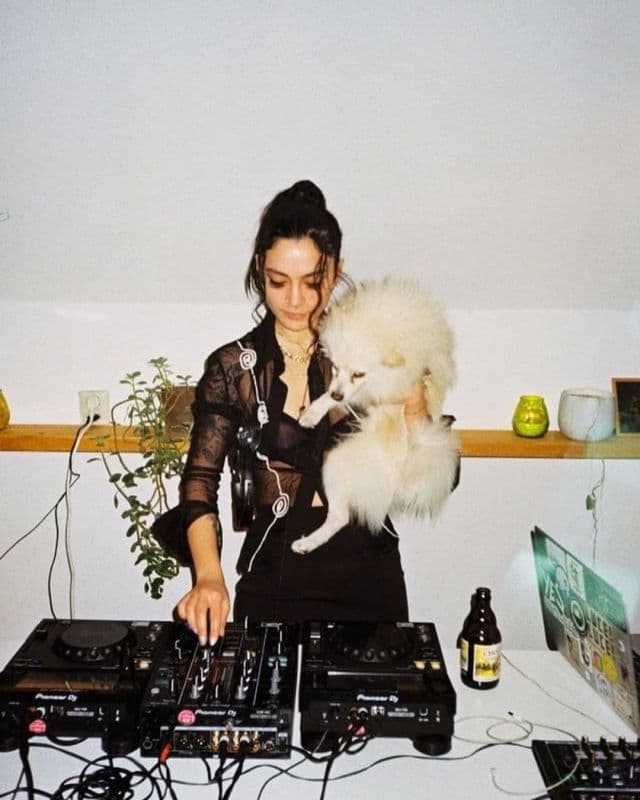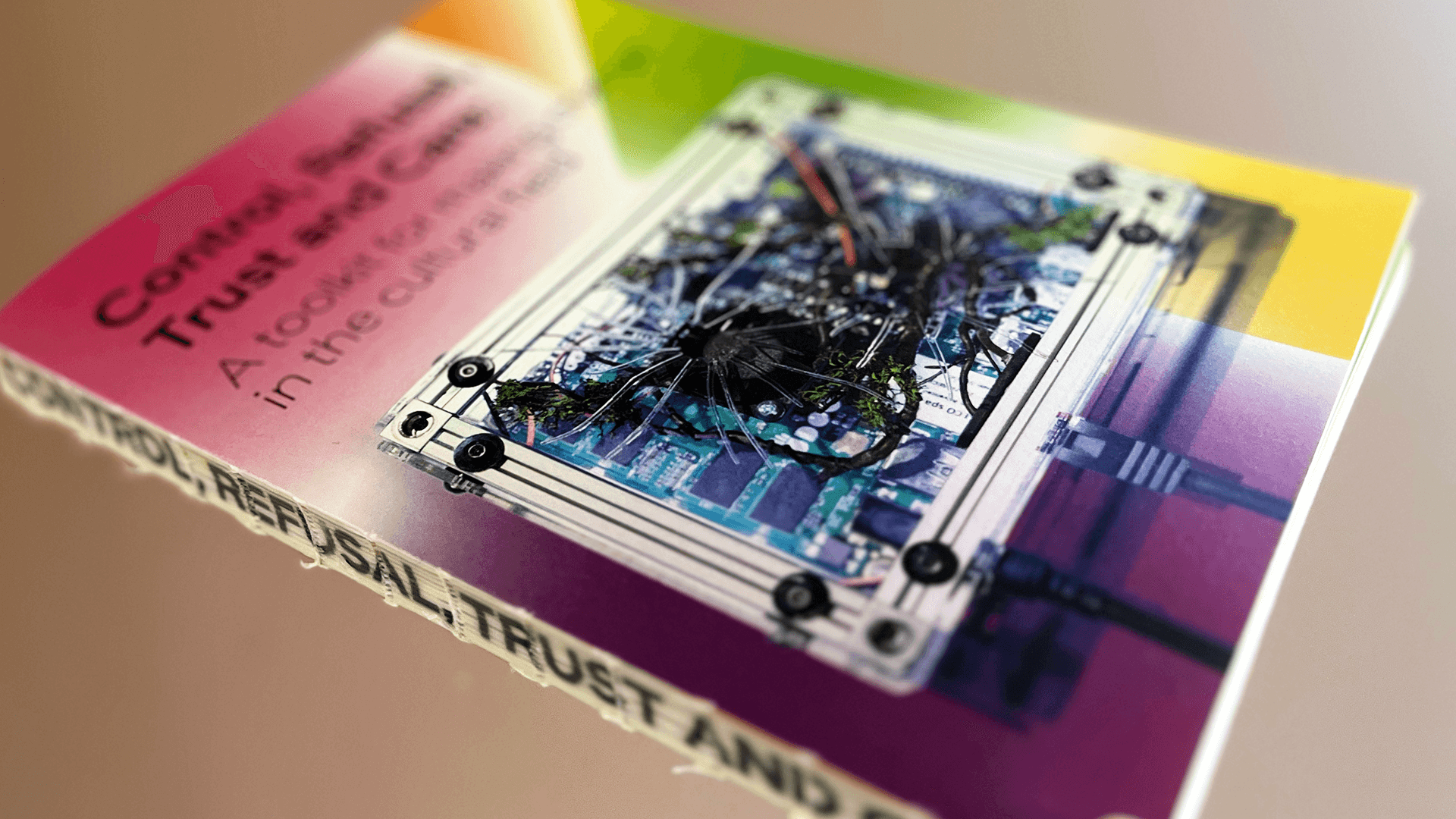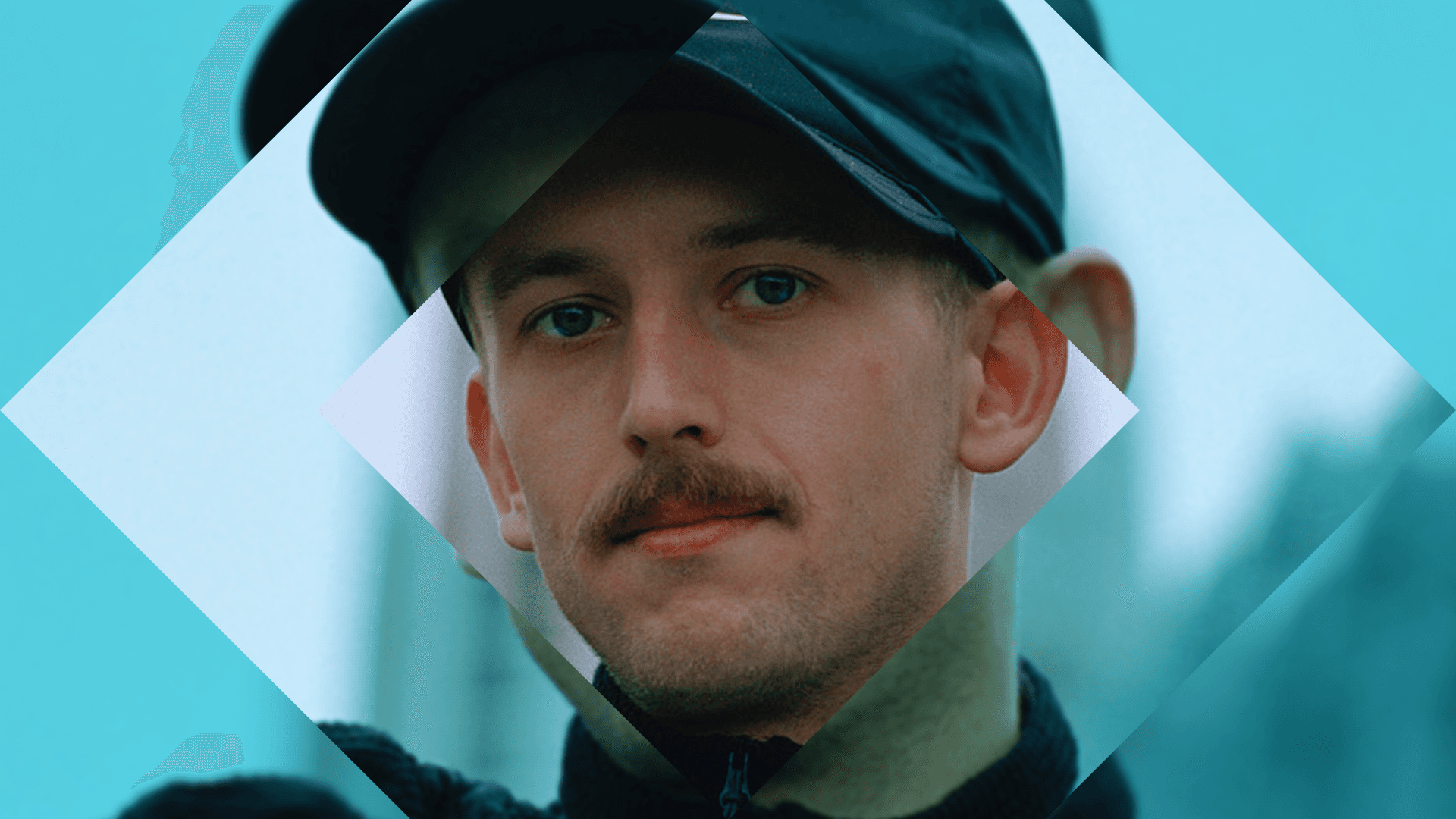We welcome multidisciplinary artist in residence Yara Said (1991) at Waag and have a chat on jet fighters, experimental noise music and the translation of art for a Western context. Yara graduated in Fine Arts at the University of Damascus and holds a Master's from Sandberg Institute. Next to artist, sound designer and DJ, she's is creative director at Salwa.
Hi Yara, it's nice to be able to talk.
Yeah, I’m pretty happy about having this conversation, because the research I am doing right now is dense with emotional labour.
Does that mean your work is quite personal?
Yes, definitely. Lately, the end product doesn’t look that personal, but it’s always coming from a very personal perspective during the research and the process of making the work itself.
Could you tell us a bit about your personal perspective?
In Damascus (Syria), where I come from, we experienced a lot of jet fighter attacks. That, and the bombing, the attacks and the fear I’ve witnessed during my daily life as I try to function as a worker, student and artist, leaves emotional baggage on you. I’m carrying around a sound trauma in my body. When I came here, I realized that it doesn’t matter how much time passes. I still experience fear, for example, on New Year’s or if there’s a sudden noise.
When I started talking about it with my friends, I noticed that everyone from Syria has this. This common grief process we have on our mental and physical existence as fear and trauma tend to show themselves in both ways. We are carrying these emotional landscapes and fear from our past to now, as sound will always trigger us.
'We are carrying emotional landscapes and fear from our past to now, as sound will always trigger us'
How would you describe your work?
As an art student in Damascus, I used to paint and make drawings. Through my painting discipline and a very orthodox way of learning theory and art, I carried a classical education. But when I came here, I felt like Amsterdam carried so much opportunity and technology for storytelling that facilitates a bigger space for my practice. It opened a gate for me to experience and experiment with different disciplines in my artistic practice.
Currently, my work combines digital media, pop culture and the personal. I like collecting Youtube videos and using folk and pop music from my region. My friends and I always watched these kinds of videos together, so I made a film called ‘Child’s Play’. It’s going to be part of an installation.
What’s your favourite medium right now?
It’s definitely music, because it’s a learning process for me.
I’m editing the video with some ridiculous American propaganda Youtube videos about jet fighters to collage two different approaches together. I’m using footage from Top Gun, in which ‘hot pilots’ like Tom Cruise are fetishized. This guy, he murdered my people. Not Tom Cruise, but this image of a hot pilot man. It carries a certain way of propaganda to justify violence in Syria and the Middle East. And don’t get me wrong: I actually like Top Gun. It’s a great movie. But if I had a son, I wouldn’t want him to play with jet fighters. They’re giving war toys to our children!
I’m getting crazier and crazier through my work. I’m not shy anymore to have a certain structure or narrative to my works. It carries a certain amount of fiction in my works. It is poetic because I like to dream and stimulate the imagination.

'I want people to be able to feel what I feel. That’s why I DJ as well, because I love seeing my friends dancing'
Would you say the music you make is also dreamy?
No, I make experimental noise music, and I’m interested in sound design. My producer name is Noise Diva. I made a soundtrack for a short film in Rotterdam with friends that I collaborate with, and I also make club music for people to dance on. You can find me on Mixcloud.
What do you particularly like about music and sound as an artistic medium?
I’m interested in the embodiment of feelings. Sound can build an image, an atmosphere. I want people to be able to feel what I feel. That’s why I DJ as well because I love seeing my friends dancing. I’ve also curated songs for Sonic Acts, where I used music from an artist who made an album from war sounds. Music is a very important way to express violence. It would be good to involve musicians and producers, and DJ’s more in curatorial practices and decisions. Also, we need to party more. We need to dance.
You studied at the Sandberg Institute, right?
Yes, I graduated in November 2020. Being in Sandberg was a different experience compared to Damascus. It was all about creating your practice, space, and process with Sandberg. It was quite an intense year because I was also working for my foundation Salwa. We design cultural programs for artists with a migrant background, and we hire artists with a migrant background to run the cultural programs or to take part in them.
'Everything can be pretty intimidating if you're new and don't know people'
What could Salwa do for artists with a migrant background?
We run a few courses. One of them is Future Framing, which was with a group of KABK students who applied through our open calls. We gave them an 18 weeks course where you look at your practice and portfolio and reposition yourself. Technically, it's how you make a portfolio that fits the Dutch scene.
But in a more heartfelt way: you come as an artist who doesn't have the art world's language here. The art world here is very advanced and very privileged, so we try to empower the students throughout this course. Create a safe environment for them to approach their work with honesty. We help them translate their work for funding applications, an open call for an exhibition, or a voluntary position. As trivial as it sounds, everything can be pretty intimidating if you're new and don't know people.

Did you feel that way when you arrived here?
That’s why Salwa is a personal project. I started it because I wanted to create a place where my friends and family could come. I don’t want to be with a bunch of strangers. I want to be with my people, and I want to open up this space so they can develop themselve as artists and creative people.
'I’m not saying you should be a complete sell-out. But this should be taught at art schools: artists need to make money'
Do you think some meaning could also get lost in the way, if you’re an artist who tries to translate their work to the Dutch context?
The translation is a very interesting process. I don’t think something will get lost. I’d like to think of it as a shapeshifting practice because you have to hustle. It’s a hard world we live in, the art world. You either have to do what other people want you to do to get the money and be rich, or you try not to do it and then you’re poor. Or you try to do it your way, and then you have a decent living, and that’s fine. That’s how I do it. When you asked me this question, I thought about money immediately.
So when you start creating art, you always have your audience and certain institutions in the back of your mind, who could enable you to create more work?
I’m not saying you should be a complete sell-out. But this should be taught at art schools: artists need to make money. I’m not going to be all bubbly and dreamy about it. Of course, it’s important to be self-sufficient. Certain economic freedom for yourself as an artist creates a space for you to be freer in your practice. Art schools don’t take any responsibility for learning how to make a portfolio, present yourself, and create an artist’s statement.
In what ways would you like to work together with Waag?
I always wanted to dig deeper into research for my work. Any artist needs resources, so I’m excited. I feel like there’s space for a more extended collaboration. Like the topic of sonic warfare, it’s not touched upon that much. It’s exciting to work with Waag to see how we can collaborate and find sources that provide numbers and facts. I need that to ground my work.
What are your plans for the following year?
I will do the creative direction and curating at Salwa. This year, we have an entire program in care practices that will run at Goethe Institute, Framer Framed and Casco. So now, I can get to do the fun stuff.
I’m also researching military jet fighters for my work. It’s going to be funny. I’m aiming for an installation with drawings, videos and sound. The plan is to build a real-size jetfighter. And I also want to make a lot of drawings of jet fighters. Because I think jet fighters look beautiful, and there is a certain rawness to their beauty, animalistic like a whale or a bird.


